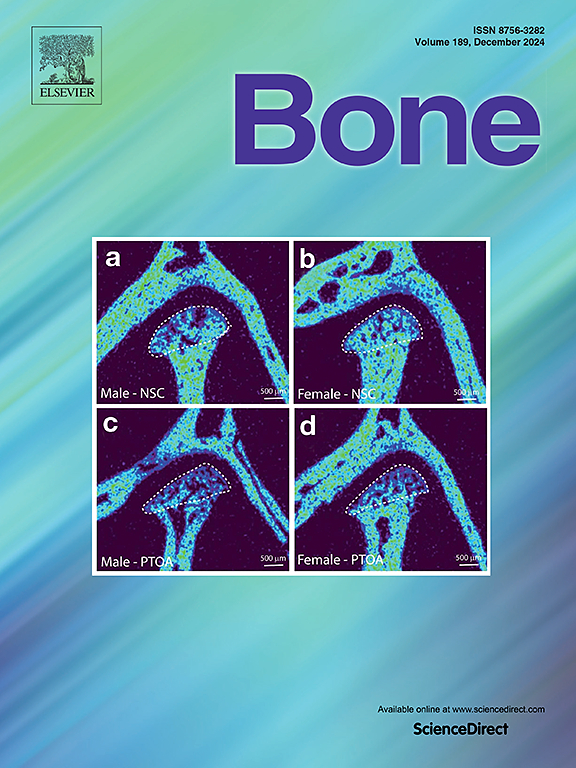Machine learning-driven clinical decision support for low bone mineral density: A web-based prediction model with explainable AI integration
IF 3.6
2区 医学
Q2 ENDOCRINOLOGY & METABOLISM
引用次数: 0
Abstract
Background
Low bone mineral density (LBMD), which includes osteopenia and osteoporosis, is associated with substantial health care costs. However, current diagnostic methods for LBMD are limited in terms of accuracy and accessibility. This study aims to develop an interpretable machine learning model for LBMD risk assessment and implement it as a web-based clinical decision support tool.
Methods
Data from subjects who underwent dual-energy X-ray absorptiometry (DXA) at the People's Hospital of Guangxi Zhuang Autonomous Region were collected and randomly divided into a training set (70 %) and an internal validation set (30 %). An external validation set was sourced from the National Health and Nutrition Examination Survey (NHANES) database. Least absolute shrinkage and selection operator (LASSO) regression and multiple logistic regression were used for feature selection. Ten common machine learning models were conducted based on the selected features. Model performance was assessed using the area under the receiver operating characteristic curve (AUC), Matthews correlation coefficient (MCC), Brier score, and decision curve analysis (DCA). The decision mechanisms of the best-performing model were explained using SHapley Additive exPlanations (SHAP) and Local Interpretable Model-agnostic Explanations (LIME). The optimal model was deployed as a web application using Streamlit.
Results
A total of 16,274 participants were included in this study. Age, body mass index (BMI), alkaline phosphatase, and total cholesterol were identified as key predictors of LBMD. The logistic regression (LR) model demonstrated superior prediction performance (internal validation set [AUC = 0.902, MCC = 0.684, Brier score = 0.123], external validation set [0.812, 0.358, 0.265]). DCA confirmed its clinical utility. Both SHAP and LIME showed consistent results in identifying predictive factors. The LR model was deployed as a web application to predict LBMD.
Conclusion
Our interpretable machine learning model and web-based implementation provide a free and reliable tool for predicting LBMD, which represents a significant advancement in making LBMD screening more accessible and cost-effective.

机器学习驱动的低骨密度临床决策支持:基于web的预测模型与可解释的人工智能集成。
背景:低骨密度(LBMD),包括骨质减少和骨质疏松症,与大量的医疗保健费用相关。然而,目前LBMD的诊断方法在准确性和可及性方面受到限制。本研究旨在开发一种可解释的LBMD风险评估机器学习模型,并将其作为基于网络的临床决策支持工具实施。方法:收集广西壮族自治区人民医院双能x线吸收仪(DXA)患者的数据,随机分为训练集(70 %)和内部验证集(30 %)。外部验证集来自国家健康与营养检查调查(NHANES)数据库。最小绝对收缩和选择算子(LASSO)回归和多元逻辑回归用于特征选择。基于选择的特征,建立了10个常见的机器学习模型。采用受试者工作特征曲线下面积(AUC)、Matthews相关系数(MCC)、Brier评分和决策曲线分析(DCA)来评估模型的性能。采用SHapley加性解释(SHAP)和局部可解释模型不可知解释(LIME)对最佳模型的决策机制进行了解释。使用Streamlit将最优模型部署为web应用程序。结果:本研究共纳入16274名受试者。年龄、身体质量指数(BMI)、碱性磷酸酶和总胆固醇被确定为LBMD的关键预测因子。logistic回归(LR)模型表现出较好的预测性能(内部验证集[AUC = 0.902,MCC = 0.684,Brier评分 = 0.123],外部验证集[0.812,0.358,0.265])。DCA证实了其临床应用。SHAP和LIME在识别预测因素方面的结果一致。LR模型作为web应用程序部署,用于预测LBMD。结论:我们的可解释机器学习模型和基于web的实现为预测LBMD提供了一个免费可靠的工具,这代表了LBMD筛查更容易获得和成本效益的重大进步。
本文章由计算机程序翻译,如有差异,请以英文原文为准。
求助全文
约1分钟内获得全文
求助全文
来源期刊

Bone
医学-内分泌学与代谢
CiteScore
8.90
自引率
4.90%
发文量
264
审稿时长
30 days
期刊介绍:
BONE is an interdisciplinary forum for the rapid publication of original articles and reviews on basic, translational, and clinical aspects of bone and mineral metabolism. The Journal also encourages submissions related to interactions of bone with other organ systems, including cartilage, endocrine, muscle, fat, neural, vascular, gastrointestinal, hematopoietic, and immune systems. Particular attention is placed on the application of experimental studies to clinical practice.
 求助内容:
求助内容: 应助结果提醒方式:
应助结果提醒方式:


